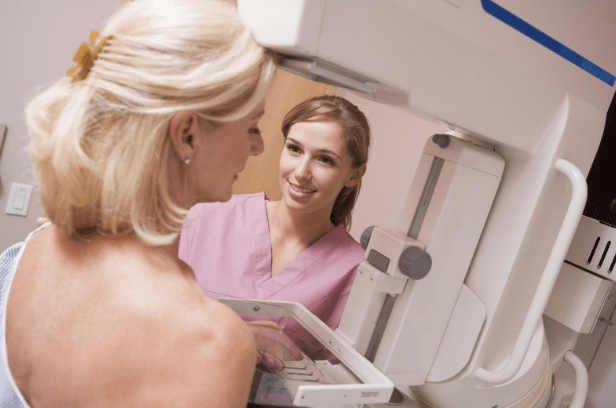It’s estimated that about 1 in 8 women in the United States will develop invasive breast cancer at some point during their lives. To put that into perspective, that’s about 268,600 women. It’s also estimated that about 2670 men in the United States will develop invasive breast cancer in 2019.
These statistics are scary, but they don’t mean you should be running out and getting a mammogram every chance you get.
So How often should you get a mammogram? Keep reading to learn all about breast cancer and mammograms.
What You Should Know About Breast Cancer
First, let’s talk a little bit about breast cancer.
As we mentioned, women aren’t the only ones who can develop breast cancer. While it is statistically more likely for women, men are also susceptible to this disease.
Let’s talk about family history.
It’s common for people to think that they aren’t at risk for breast cancer if it doesn’t run in the family. It’s important to know that family history is only one risk factor, as only 12% of people diagnosed with breast cancer have a family history of the disease.
Next, it’s important to understand that there are different types of breast cancer. The most common types include:
- Ductal carcinoma in situ
- Invasive ductal carcinoma
- Inflammatory breast cancer
- Metastatic breast cancer
Different cancers grow at different rates and some are more harmful than others. Invasive ductal carcinoma is the most common form of breast cancer.
Signs and Symptoms of Breast Cancer
Since invasive ductal carcinoma is the most common, we’re going to focus on signs and symptoms for this particular type.
The following symptoms are early warning signs:
- Increase in size/shape of the breast
- Changes in the appearance of one or both nipples
- Nipple discharge
- General pain around breasts
- Lumps
- Peeling or flaking nipple skin
- Change in color
- Lump or swelling in underarm lymph nodes
The earlier that you can catch breast cancer, the better chance you have of winning the battle.
How Often Should You Get a Mammogram
That being said, isn’t a mammogram the best way to catch cancer? And if that’s the case, why aren’t we getting mammograms every 6 months for our entire lives?
In theory, you’d be right. This is actually what doctors and researchers believed only a few years ago. In fact, it used to be recommended that women start being screened as early as 30, and continue screenings yearly.
After years of studies, it was found that mammograms only decrease cancer-related deaths by 15% – which is much less than everyone had anticipated.
After this new research came to light, the recommendation was changed for women to start screening between the ages of 40-49. But, again, after further research, the US Preventative Services Task Force (USPSTF) has set the recommendation for screenings after the age of 50, unless you’re exhibiting certain risk factors, and re-screening every 2-3 years.
The Downside
But why do they keep changing it? Isn’t it worth it if just one life is saved?
The problem with mammograms is that, while they can detect irregularities, such as nodules or lumps, they aren’t able to determine what those irregularities are. And, of course, if your doctor finds any signs that lead to cancer, they are going to take an aggressive approach to find out exactly what it is.
Bumps, bruises, nodules, or irregularities in general happen to everyone because our bodies are all unique.
This leads to false-positives and, in some unfortunate cases, overtreatment.
About half of women will receive at least one false positive over 10 years of regularly receiving mammograms.
Another problem with mammograms is that they can’t tell the difference between the different types of cancer. As we mentioned, some cancers grow significantly slower than others, meaning they don’t grow fast enough to cause any real harm.
Imagine going home and telling your family that you have breast cancer and need chemo or radiation treatments, only to find out that the type of cancer you had wasn’t harmful from the beginning.
This is the same reason why when you go to the doctor they only perform relevant testing. It’s because when you start testing and scanning every inch of your body, you’re going to find abnormalities. These abnormalities lead to more testing and again over treatment.
When Should You Stop
Once you do start your regular mammogram screenings, you don’t have to do them for the rest of your life.
It is recommended that women 75 and older, or anyone with a life expectancy of fewer than 10 years, should stop routine mammogram screenings.
Of course, if you notice any abnormalities or new symptoms, your doctor may order a mammogram to see what’s going on, no matter your age or life expectancy.
What About Routine Best Exams
Routine breast exam or important to perform, not only by your doctor but specifically by you. You know your breast better than anyone else, so you will be the first person to notice any changes.
It is recommended that women perform self-breast exams every month. Aside from checking for alarms, you should take note of their size, shape, color, and density. It’s important to practice good breast health regularly, along with performing routine exams.
Keep the Girls Healthy
All in all, breast cancer is a scary subject. It’s important to keep yourself as informed as possible.
So the next time someone asks, how often should you get a mammogram, you can be the first to answer with the latest research.
Browse through the rest of our site for more ways to stay healthy and happy.
I’m a 20-something stay-at-home mother and wife. I have an amazing husband, a beautiful daughter, two loving dogs, and a lazy cat. I wouldn’t change my life for anything! I love to read, listen to music, cook and blog!



Speak Your Mind